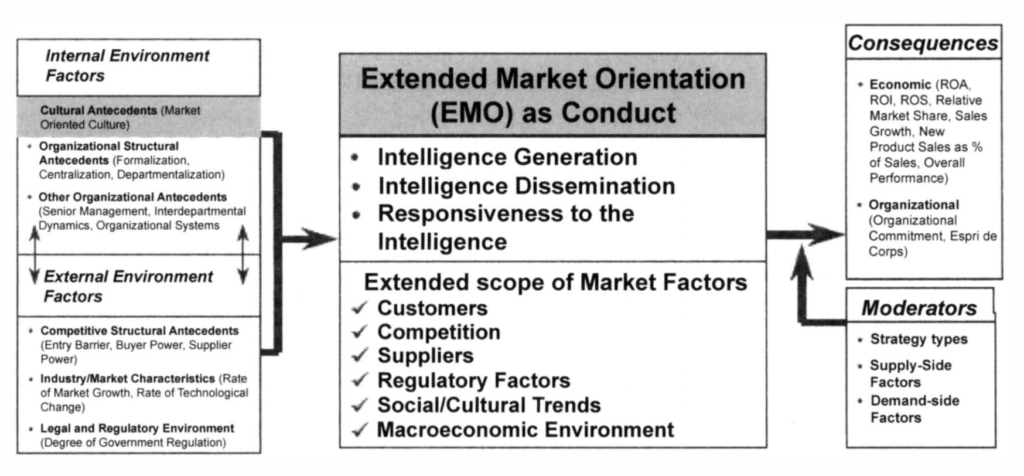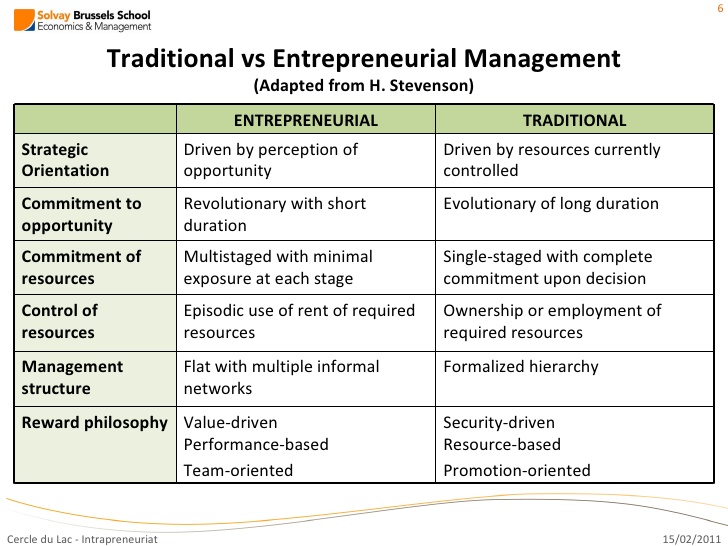A company’s market orientation (MO) has been shown to predict business success financial performance, such as sales, sales growth, ROI, etc., as well as happier, more committed employees. So far, so good. But how can you tell if your firm is attuned to the market?
Market orientation (MO) is an organizational culture focused on understanding the state of a market and the needs of targeted customers. The higher your firm’s market orientation, the more in tune you are with customer and competitor behavior. This entails gathering and disseminating both competitor and customer information, and creating an organization that knows how to respond to that information in the form of valued products and services created (Narver & Slater, 1990, Jaworski & Kholi, 1990, Matsuno et al., 2005).

Easier said than done. Remember, this is an organization-wide culture focused on the market, not just an attitude of people in marketing or sales. Key elements are:
Creating a supportive internal environment:
- Management attitude, from the top down, committed to a continual focus on customers and changes in the industry AND a willingness to take risks to solve customer needs (reactively and proactively),
- An entrepreneurial organization structure that breaks down silos and formal processes in order to encourage cross-company communication of information about customers and markets, and
- Inter-departmental dynamics the encourage connectedness and discourage conflict.
Being attuned to the external environment:
- Remember the Porter Five Forces industry analysis you learned all those years ago? Time to refresh your memory. This is a powerful industry analysis tool that helps you understand where the power is in an industry. What is the competitive structure of the industry? How is it changing? What are the barrier to new entry? How much power do customers have over how you define the 4P’s? How much power do suppliers have? Is it time to redefine your product/service offering so you have more control over your firm’s destiny and how it meets customer demand?
- How is the industry changing? Technological change? Customer demand?
- Are changing governmental regulations helping or hindering your business? Where are they headed next? How can you modify your offerings to be more competitive, given these changes?
Once you have a handle on the internal and external environments and how they’re impacting your business, you need to establish ways to continually examine the market and disseminate that information throughout the company. Big tech companies wrestle with this issue all the time. That’s one of the reasons they frequently reorganize…to keep information fresh, to keep ideas percolating, and to discourage silo’d thinking.
Ultimately, increasing market orientation starts with the priorities established by senior managers in your firm. Howard Stevenson (1983, 2006) created a framework for representing the spectrum of managerial behavior. Entrepreneurial behaviors are on the left and traditional administrative behaviors are on the right. Where is your firm located?

Ready to increase your firm’s market orientation? Telesian provides the planning, research, and positioning that provide your company with a strategic competitive advantage.


